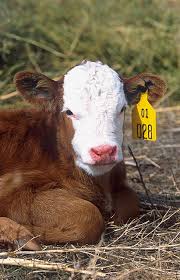
Submitted by:
Eve H. Honeycutt, Livestock Agent, Lenoir and Greene Counties
Adapted from an article by Barbi Riggs, Crook County, Oregon State University Cooperative Extension
Cattlemen are always trying to figure out how to increase profits from the herd. There are lots of changes that can be made, but only a few will actually yield a good result. There is a tool that some producers have not used yet that can significantly increase income and save labor. The length of the calving season can be managed to produce more pounds of calf at weaning and therefore increase profit.
Weaning of calves is typically done at a given date regardless of weight or age of the calves. Young calves wean at lighter weight than older calves simply due to age. For example, a calving season of 180 days results in calves that may have weaning weights anywhere from 320 pounds to 560 pounds and ages of 4 months to 8 months of age. Let’s assume that the average weight for this set of calves is 480 pounds. Total weaning weight for 100 hd of calves is 48,000 pounds. Now, let’s assume that this same set of cows calve in 60 days rather than 180 days. Weight for these calves range from 500-560 pounds and let’s say the average is 542 pounds. Total weaning weight for the 100 hd of calves is 54,200 pounds. The difference in weight is 6,200 pounds or equivalent to selling 11 more calves OR an extra 62 pounds per calf if breeding season is shortened. Another way to look at this, in the shortened breeding season, the producer could experience 7% reduction in weaning weights or calf crop to have the equivalent income as the lengthened calving period. Assume calves are selling around $100.00 per cwt, this translates into an increase of $62.00 per calf. The results of a similar scenario in regards to potential income will vary slightly dependent upon price of calves. Lighter calves do bring more money per pound however, it has been estimated that a uniform calf crop that is similar in appearance can optimistically yield a premium of $50-$70 per head, further supporting economic benefit to shorter calving seasons.
Shortening the calving season has other benefits as well. Calving season of 60 days means fewer nights watching cows and fewer days tagging calves. Calf loss due to negligence or lack or recognition of dystocia problems is less likely to occur. My experience is that the last few cows to calve have a tendency to not be watched as closely because focus is on other projects such as seeding crops or fertilizing pastures. By shortening the calving season we are less likely to be distracted. Having a calving season of 45-60 days will result in a more reproductively sound herd. The females that do not breed back within this structure will eventually fall out of the herd leaving only the most reproductively sound females and will propagate reproductively sound replacement heifers.
How do we accomplish a tighter calving season? The strategy will depend upon how spread out your current calving season is and the number of cows in your herd. If you are currently calving year-round, it may take a few years to achieve a 60 day calving season without too much loss of revenue. However, the first line of attack should always be with your replacement heifers. A producer should pick his target dates for calving and plan appropriately for the replacement heifers. Be sure to breed the heifers 3-4 weeks prior to the mature cows in order to allow the growing heifer ample time to recover from calving/lactation before the next breeding season.
Remember that tight breeding season means tight calving season. Although you have less time to watch cows, intensity of calving can be great particularly if synchronization was utilized. Management of a short breeding/calving season will be successful only if the producer is firm with the dates. Bulls must be turned in with the cows on the appropriate date and must be pulled at the appropriate date regardless of other obligations. Cows that do not breed and calve within the set season must be culled without exception.
Shortening the calving season is a cost effective program that can increase profit and reproductive performance of the herd with little to no extra input costs.
No comments:
Post a Comment